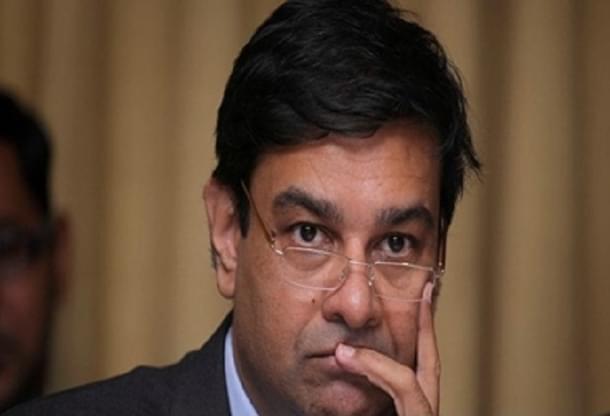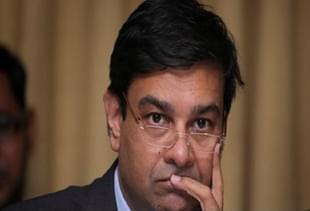Politics
Urjit Patel Is The Right Choice, But Perhaps For The Wrong Reasons
Shanmuganathan Nagasundaram
Aug 24, 2016, 01:12 PM | Updated 01:12 PM IST
Save & read from anywhere!
Bookmark stories for easy access on any device or the Swarajya app.


With all of the praise heaped
on Urjit Patel, the media seems to have largely forgotten the singular reason
why Patel has been made the RBI Governor – undoing the mess that Subramanian Swamy
had created with his Keynesian rants against Raghuram Rajan.
Narendra Modi, or,
for that matter Arun Jaitley, are quite likely to be clueless as to why Swamy
is wrong
on his economic arguments. But by appointing somebody who would be the
closest to Rajan in terms of his monetary stance, Modi may be showing he is the
boss!
The decision, therefore, should be seen as a political rather than an economic one. Swamy, for his part, seems to have fallen in line as well, with his muted response to a situation wherein Patel is largely seen as the person behind the (supposedly) hawkish RBI stance that Swamy was ranting against.
So all’s well that ends well?
Hardly the case.
For one, despite the
widespread appreciation of Rajan, he does
have two fundamental misunderstandings and that bias persists to this day
in the RBI. It is likely to continue well into the future as well. The first was his mistaken belief that a series of US Fed rate hikes
was around the corner; the second was using CPI as a gauge for measuring
inflation.
The question is why we should accept four percent as the middle range
in the new CPI targeting mechanism. Just to remind readers, four percent was the rate
at which Nixon introduced his disastrous price controls in the US as he thought
four percent was too high a rate of inflation.
For those who think
developing economies need a higher inflation rate than developed economies, let
me once again define inflation correctly: it is taxation by the government by
getting central banks to monetise their deficits and blaming the effects of
these actions (which is increase in prices) on the weather, supply constraints,
growth, greedy businessmen, Opec. etc.
It is to be noted that inflation hurts
the middle-class and the people at the bottom of the system. What one hand gives
in terms to doles and freebies, the other hand takes away much more in the form
of increased prices of essentials. Of course, there is a time lag between the
two and so most people don’t understand the correlation, but there’s no better
way to destroy the middle-class than an inflationary monetary policy.
As the timeless philosopher Ernest
Hemingway noted:
“The first panacea for a mismanaged nation is inflation of the
currency; the second is war. Both bring a temporary prosperity; both bring permanent
ruin. But both are the refuge of political and economic opportunists.”
So why should this decision
to appoint Urjit Patel be seen as a political one? It is because most other
actions of this government have not been consistent with a conservative
economic philosophy. Modi could have done plenty of things to make the economy
move much faster – cutting taxes, reducing government expenditures dramatically
to move towards balanced budgets, deregulation of a host of industries and
getting rid of all kinds of discretionary interventions.
On the people front,
he should have fired Arvind Subramanian (who is pretty much in the mould of P
Chidambaram and Manmohan Singh when it comes to his economic thoughts) and opted
for a more free market-oriented advisor than Arvind Panagariya. Had he done at least
some of the above and then appointed Urjit Patel, then I would have seen the
decision as an economic one. On a standalone basis, it’s hard to make the case
that Modi/Jaitely see merit in the economic stance of Rajan/Urjit.
When we still insist on a
running a society that depends on government support from “cradle to grave”,
it’s hard to applaud one isolated “conservative” decision as being done for
economic reasons. The advantage Modi has is the track record of his predecessor
Manmohan Singh, who pretty much was reverting back to a Soviet style economic
planning model. Thus even the small reforms undertaken by Modi are being
proclaimed as game-changers. So forget Jaitley, Rajan, Swamy, Gauraksha,
Mandir, etc; the primary reason for Modi’s continued popularity is
unequivocally Manmohan Singh.
What to expect from Patel?
The primary requirement of a central
bank chief has to be a great understanding of monetary economics. All other
factors – people’s man, popularity, knowledge of Indian rural economy, etc, can
be a part of “on the job” training. On that front, the only candidate who stands out in the motley mix of Arvind(s), Subir
Gokarn, Arundhati Bhattacharya, etc, is Urjit Patel. His criticisms of the
earlier RBI Governor, D Subba Rao, on his inability to control inflation was
forthright and precise. As he wrote back then: “This
is an astonishing series of nihilistic statements - unassisted by evidence or
even a hint of scientific thoroughness - from the central bank head pleading
either hopelessness on account of India being a large and diverse federal
entity, or, a form of muddled eclecticism,”.
Such opinions on standing RBI Governors are rare and have to come from a clear understanding of the monetary principles involved.
Incidentally, this writer has his own doubts
on Urjit being the author of RBI’s inflation targeting mechanism. My guess is
that it is principally Rajan’s idea, and he might have handed over the task of working
out the mechanisms to Patel. Rajan might also have given the entire credit to Patel
just as a matter of being a genuinely good boss as well as for the purpose of
the document being seen as an institutional idea rather than his personal one.
Of course, even within the
inflation targeting idea, my earlier proposal of focusing on money supply
growth rather than CPI would be a far superior standard. But CPI is still
better than the erstwhile mish-mash of growth and inflation goals. While on the
point of inflation targeting, most authors seem to mistake RBI’s goal as a four
percent with a two percent bank on either side. It’s not; it’s five percent with a one
percent band.
Time will tell, but my guess is that Urjit Patel will continue on the path of Rajan. In the normal course, it will not make much of a difference. But where it will matter is when a currency crisis, especially in the US dollar, erupts. We would have been much better off with a Rajan under those conditions. But then, we would have been even better off with a Jim Grant than a Rajan.
Shanmuganathan N (aka Shan) is an Economist based in India. He is the author of the recently published book "RIP U$D: 1971-202X …and the Way Forward" and can be contacted at shan@plus43capital.com




